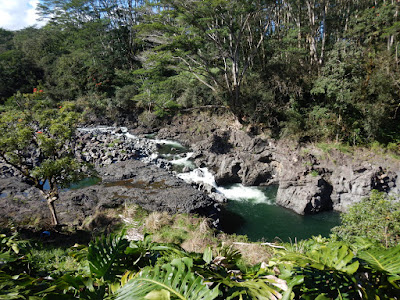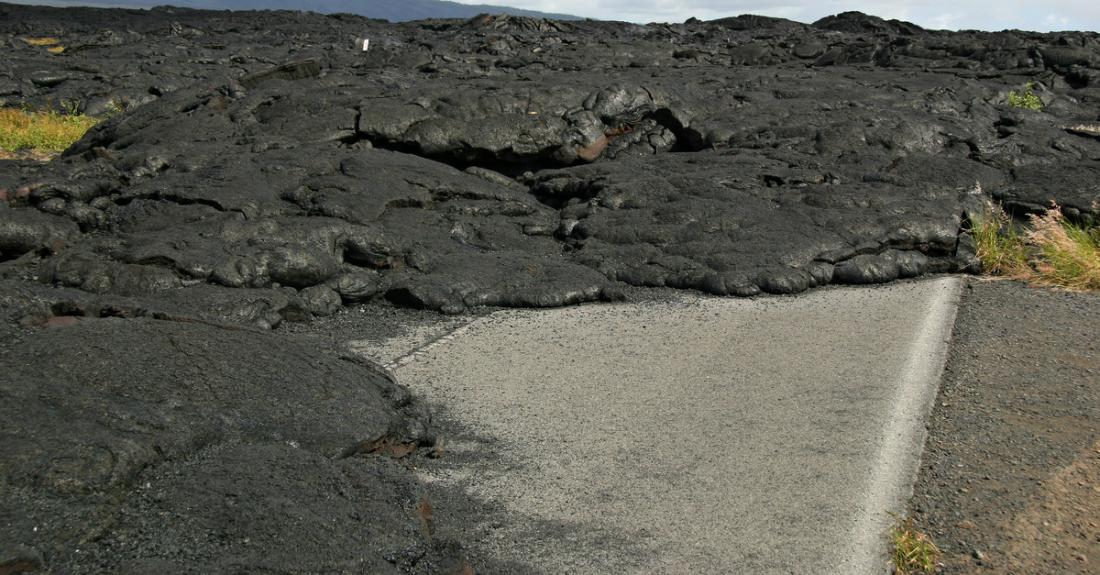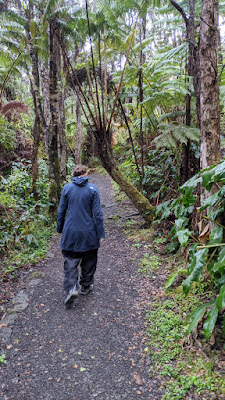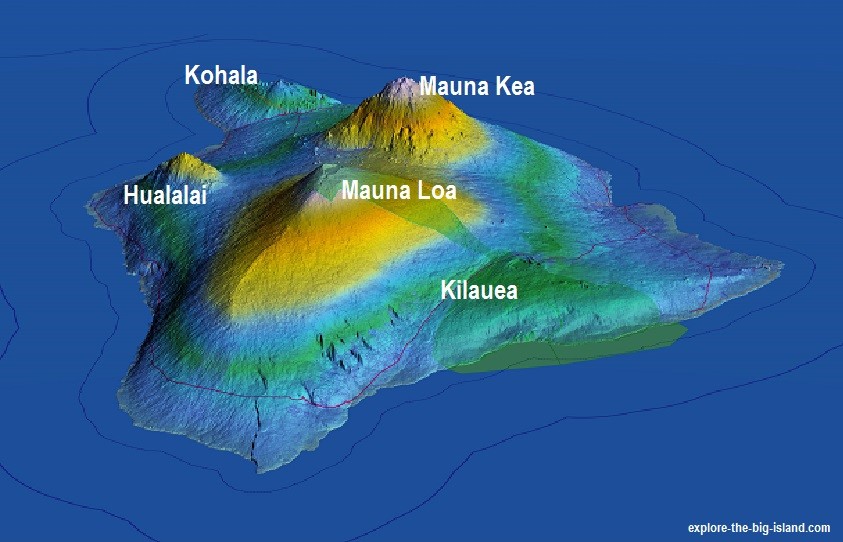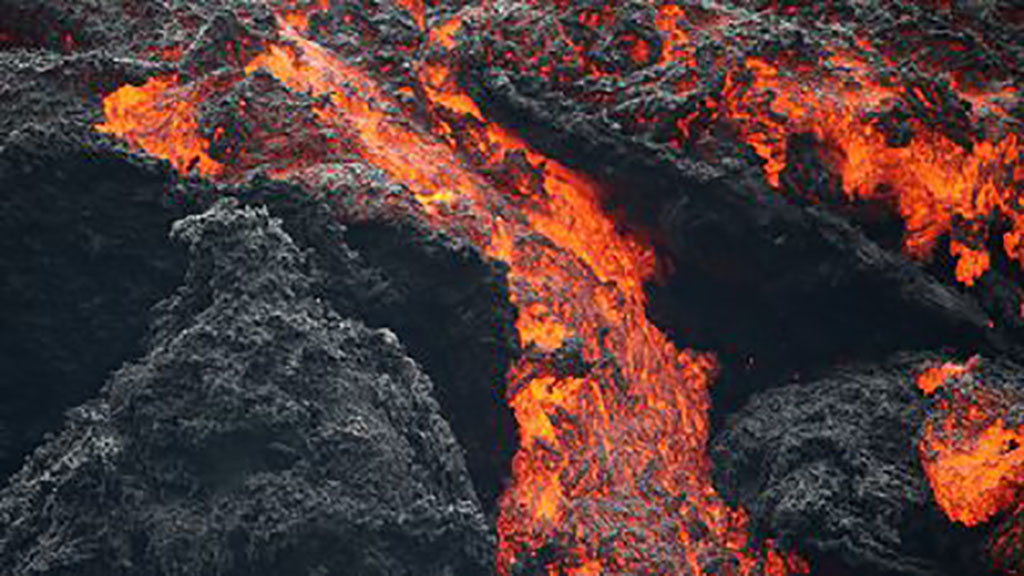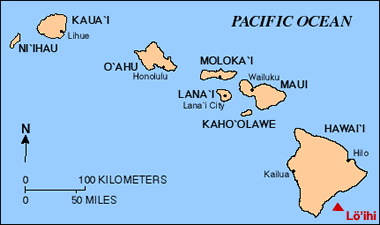Saturday,
February 22, 2020
Today
we said goodbye to our beautiful airbnb.
Our flight home was not until 10:20 pm (ugh!), which gave us the day to explore.
Our flight home was not until 10:20 pm (ugh!), which gave us the day to explore.
We
drove back towards Hilo and then a little furthur to Hawaii Tropical
Botanical Gardens. This is one of the nicest botanical gardens we have ever been to!!! Karin, I thought of you the whole time!
Then we found Kaumana Caves. These are lava tubes that make the Thurston Lava Tube look like an amateur. These caves made from lava are 40 km long and NOT lit for tourists! They were created in 1881 from lava from Mauna Loa, and it ranges from 3 feet to 30 feet in height.
We had to scramble in and then carefully make our way across the lava bottom. We went about 15 to 20 minutes in before we turned around. Anton used the light on his cell phone, then turned it off and it was pitch black. Spooky!
Then we went to Rainbow Falls, 80 feet tall, and 100 feet wide:
We walked through a tree root forest:
This is called Boiling Pots, because after a storm when the water level is high, it looks like the water is boiling:
Then we parked near the ocean and walked for awhile. There is a bridge over to Coconut Island. It is a 28 acre island which is basically a park and hangout.
Banyan Drive is a street lined with large banyan trees which have withstood several tsunamis. Banyan trees are native to India, and the first banyan (called Lahaina Banyan) was presented to the sheriff by missionaries from India. It was planted in 1873.
Banyan Drive is called the "Hilo Walk of Fame" because of the several celebrities who have planted trees here. We saw the ones planted by Amelia Earhart, Cecil B Demille, and FDR Roosevelt.
Banyan Drive is where we found more shave ice. They were a bit drippy. Frankie's white socks are now died blue from the syrup.










